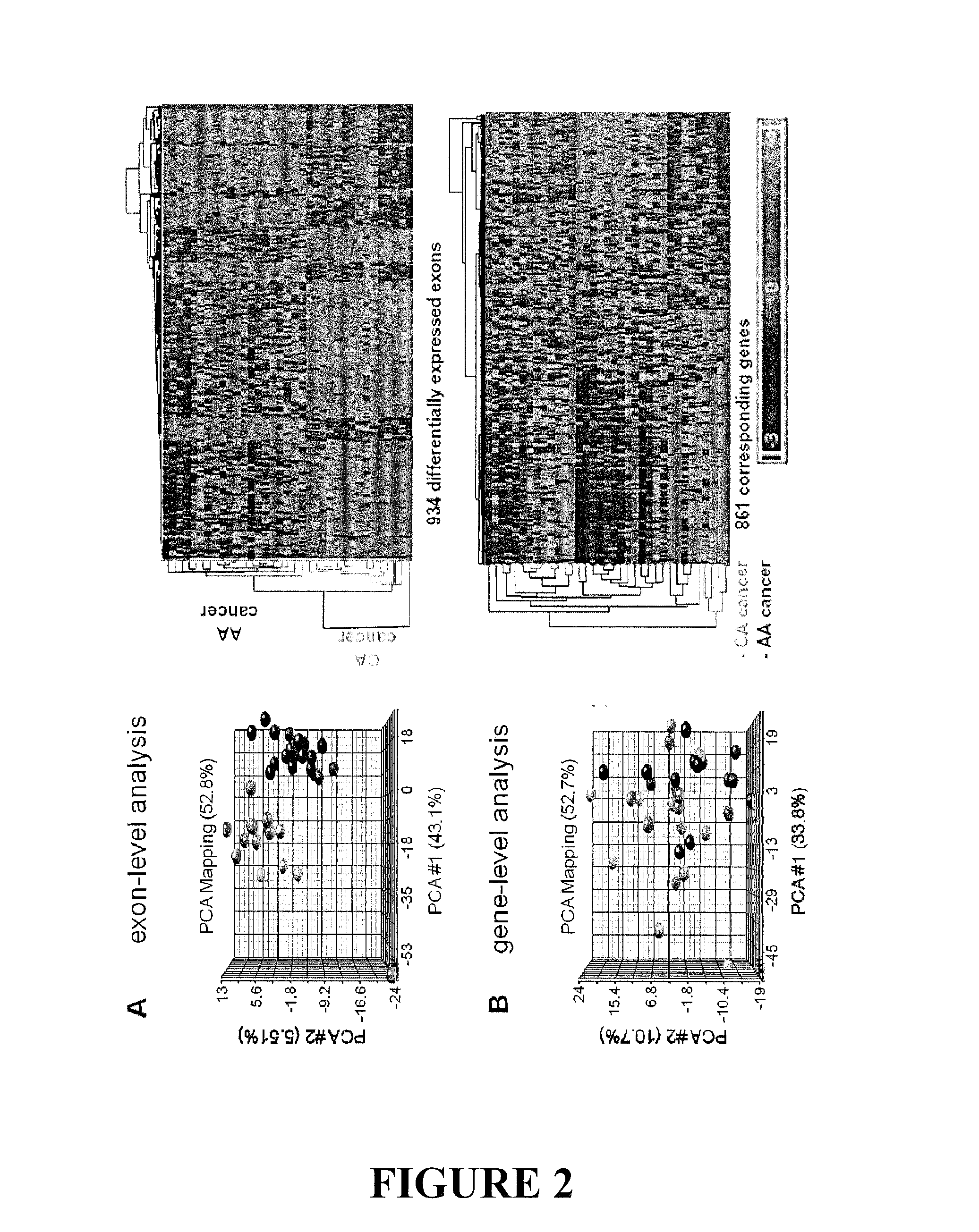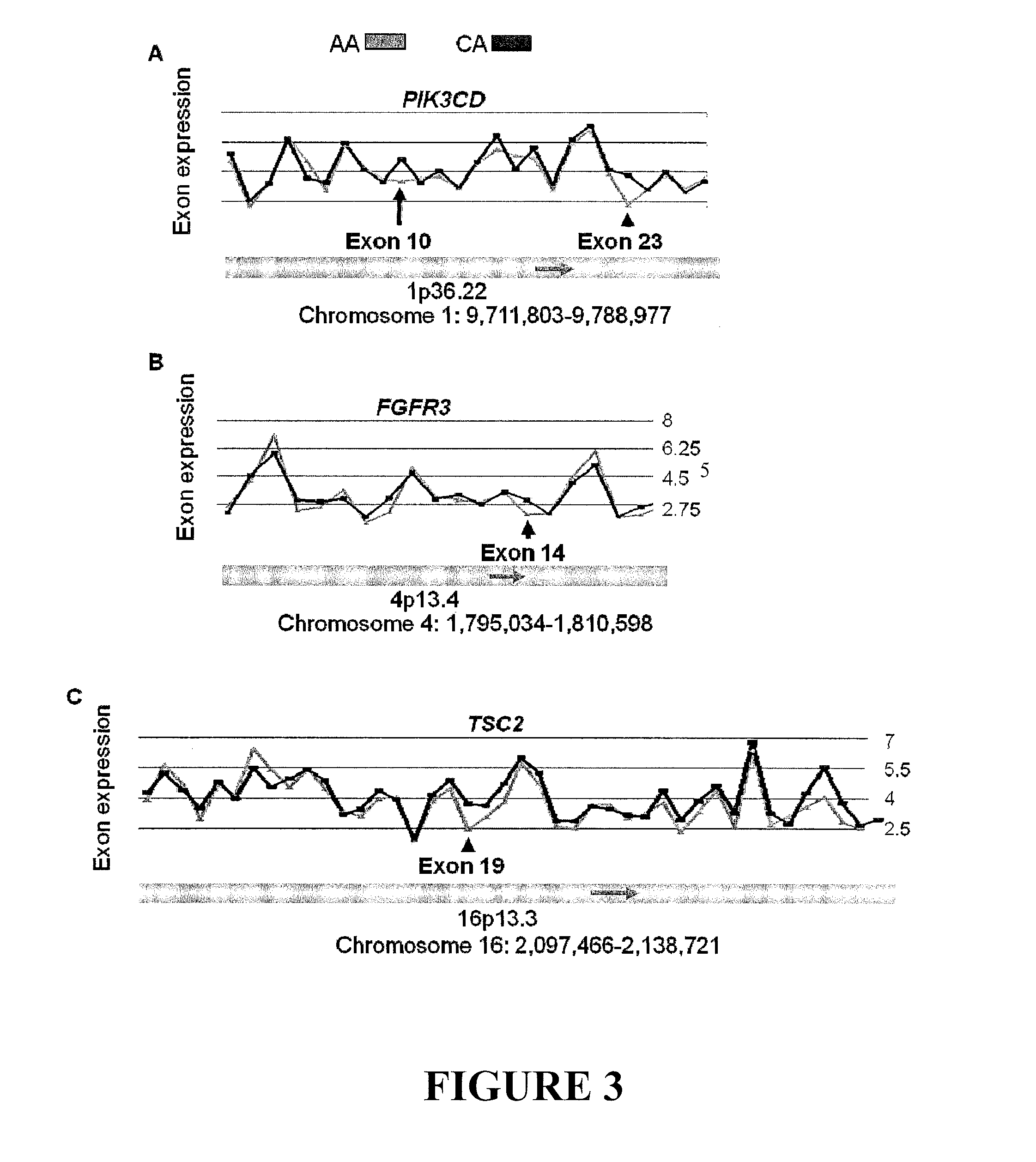Alternative splicing variants of genes associated with prostate cancer risk and survival
- Summary
- Abstract
- Description
- Claims
- Application Information
AI Technical Summary
Benefits of technology
Problems solved by technology
Method used
Image
Examples
Embodiment Construction
[0022]Alternative splicing dramatically expands the protein coding repertoire of higher eukaryotes. Current estimates suggest that greater than 60% of all human genes have more than one isoform / splice variant. The expression of specific splice variants is regulated in a developmentally and tissue-specific manner (Black DL: Mechanisms of alternative pre-messenger RNA splicing. Annu Rev Biochem 2003, 72:291-336). Alternatively spliced isoforms from the same gene can produce proteins with drastically different properties. For example, the bcl-x gene utilizes different 5′ splice sites, resulting in proteins that have antagonistic functions. The short form of bcl-x promotes apoptosis, while the long form inhibits cell death (Boise L H, Gonzalez-Garcia M, Postema C E, Ding L, Lindsten T, Turka L A, Mao X, Nunez G, Thompson CB: bcl-x, a bcl-2-related gene that functions as a dominant regulator of apoptotic cell death. Cell 1993, 74:597-608).
Characterization of Clinical Specimens
[0023]Needl...
PUM
| Property | Measurement | Unit |
|---|---|---|
| Fraction | aaaaa | aaaaa |
| Density | aaaaa | aaaaa |
| Density | aaaaa | aaaaa |
Abstract
Description
Claims
Application Information
 Login to View More
Login to View More - R&D
- Intellectual Property
- Life Sciences
- Materials
- Tech Scout
- Unparalleled Data Quality
- Higher Quality Content
- 60% Fewer Hallucinations
Browse by: Latest US Patents, China's latest patents, Technical Efficacy Thesaurus, Application Domain, Technology Topic, Popular Technical Reports.
© 2025 PatSnap. All rights reserved.Legal|Privacy policy|Modern Slavery Act Transparency Statement|Sitemap|About US| Contact US: help@patsnap.com



